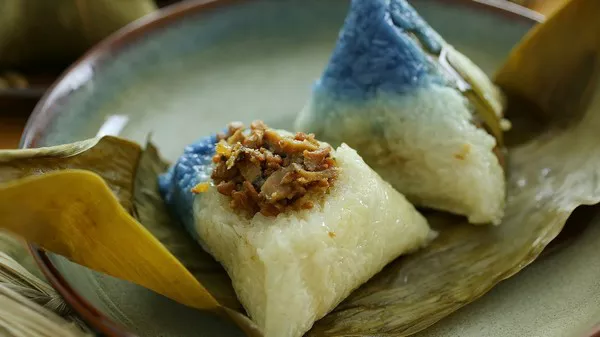Cantonese Bak Chang, also known as Zongzi, holds a cherished place in Chinese culinary traditions. These pyramid-shaped parcels of sticky rice wrapped in bamboo leaves are not only delicious but also steeped in cultural significance. The process of making Bak Chang is a labor of love, requiring patience, skill, and attention to detail. In this article, we delve into the art of crafting authentic Cantonese Bak Chang, exploring the ingredients, preparation methods, and the cultural heritage behind this delectable treat.
The Significance of Bak Chang
The Dragon Boat Festival, or Duanwu Festival, is celebrated on the fifth day of the fifth lunar month in China and among Chinese communities worldwide. It commemorates the ancient poet and statesman Qu Yuan and involves dragon boat races and the consumption of traditional foods like Bak Chang. The pyramid-shaped dumplings symbolize the act of throwing rice into the river to prevent fish from devouring Qu Yuan’s body—a testament to the festival’s deep-rooted cultural significance.
Ingredients and Variations
The key ingredients for Cantonese Bak Chang are glutinous rice, bamboo leaves, and a range of fillings. Glutinous rice is soaked overnight, imparting a sticky texture ideal for shaping and retaining flavors. Bamboo leaves are soaked and softened before use, providing a fragrant wrapper and imparting a distinctive aroma to the dumplings during cooking.
The fillings vary widely, offering sweet or savory options. Traditional fillings include marinated pork belly, shiitake mushrooms, dried shrimp, salted egg yolk, chestnuts, and mung beans. Sweet variations may feature red bean paste, lotus seed paste, or jujube paste. The combination of these ingredients creates a harmonious blend of flavors and textures within each Bak Chang.
Ingredients for Cantonese Bak Chang
The foundation of any Bak Chang recipe lies in its ingredients. While variations exist across different regions and households, certain key components remain consistent:
- Glutinous Rice: Also known as sticky rice, this is the primary ingredient that gives Bak Chang its distinctive texture.
- Bamboo Leaves: These impart a subtle aroma to the rice and provide the iconic triangular shape of the Bak Chang.
- Filling: This can vary widely but often includes pork belly, salted egg yolk, shiitake mushrooms, dried shrimp, chestnuts, and mung beans.
- Seasonings: Soy sauce, oyster sauce, salt, and sugar are used to flavor the rice and filling.
Step-by-Step Guide to Making Cantonese Bak Chang
1. Preparing the Bamboo Leaves
- Soak the Leaves: Begin by soaking the bamboo leaves in warm water until they become pliable. This step ensures they are flexible enough to wrap around the rice and filling.
- Blanch the Leaves: After soaking, blanch the leaves briefly in boiling water to remove impurities and soften them further.
2. Cooking the Filling
- Marinate the Pork: Season the pork belly with soy sauce, oyster sauce, and other desired seasonings. Allow it to marinate for at least an hour.
- Prepare the Filling: Cook the pork belly, mushrooms, and other ingredients until they are tender and flavorful.
3. Assembling the Bak Chang
- Wrap the Ingredients: Take two bamboo leaves and overlap them to form a cone. Fill the cone with a layer of glutinous rice, followed by a spoonful of the filling.
- Fold and Tie: Fold the leaves over the rice and filling to form a pyramid shape. Secure the Bak Chang with kitchen twine.
4. Cooking the Bak Chang
Boiling or Steaming: Cook the Bak Chang in boiling water or steam them for several hours until the rice is fully cooked and infused with the flavors of the filling.
The Cultural Significance of Bak Chang
Beyond its delicious taste, Cantonese Bak Chang embodies cultural heritage and familial bonds. The act of making Bak Chang is often a communal affair, with families coming together to share stories and traditions while crafting these savory parcels. The Dragon Boat Festival, during which Bak Chang is traditionally consumed, is a time of unity and remembrance, celebrating the values of loyalty, family, and heritage.
Conclusion
In conclusion, mastering the art of making Cantonese Bak Chang is not merely about preparing a dish—it’s a way of honoring centuries-old traditions and celebrating the richness of Chinese culture. From selecting the finest ingredients to wrapping each parcel with care, every step in the process reflects a deep-seated reverence for culinary craftsmanship. So, the next time you savor a homemade Bak Chang, remember the heritage and love that went into crafting this timeless delight.
Related Topics:


























